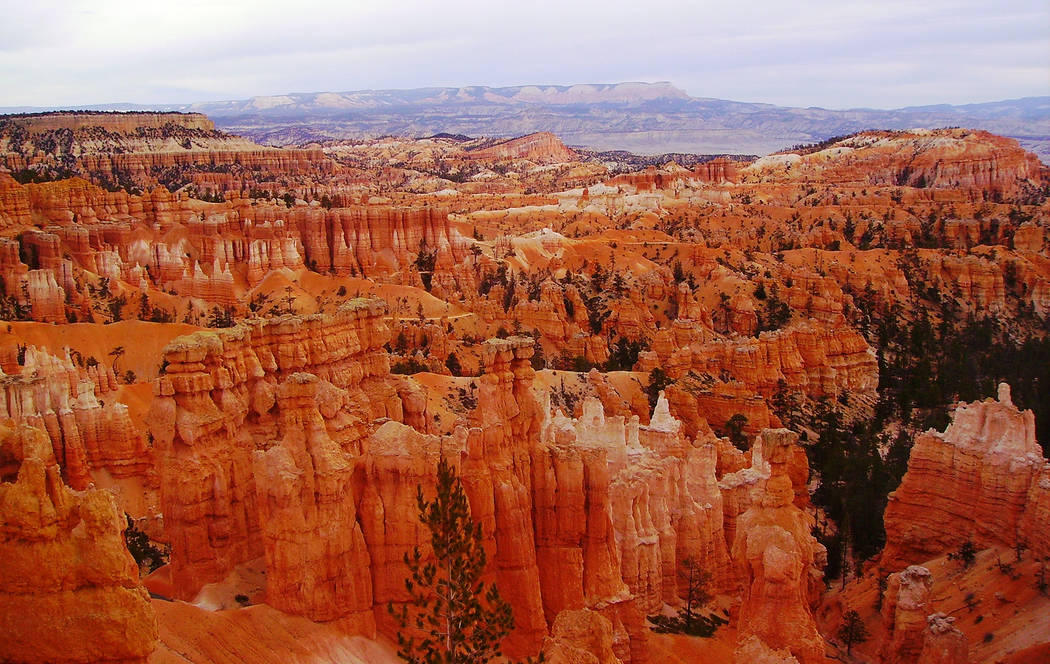
The Las Vegas area, including Boulder City, is literally one of the hottest cities in the nation, something we are reminded of daily this time of the year.
It’s also time to make a temporary escape to these summer destinations, where you’ll be sure to find cooler daytime temperatures and possibly chilly, but refreshing, mornings and evenings.
Spring Mountains National Recreation Area, Nevada. The entire recreation area covers a large geographical area. In summer your best bet will be to head up to Mount Charleston. Come to hike, camp or just to picnic. It is at 6,600 feet in elevation at the Spring Mountains Visitor Gateway, with most trailhead elevations starting even higher.
A good rule of thumb, although not a scientific one, is to subtract about 5 degrees for each 1,000 feet in elevation. So if it’s 100 degrees in Boulder City at a 2,500-foot elevation and you’re headed to Mount Charleston at 6,600 feet, it might be approximately 20-30 degrees cooler there. Hiking trails run from easy to difficult. Allow a one-hour drive. Visit http://www.gomtcharleston.com for more information.
Cedar Breaks National Monument, Utah. This is the best bet around for cool temperatures as the park is at an elevation of more than 10,000 feet. Summer temperatures are usually between 60 and 70 degrees with nights dipping into the lows 30s and 40s. The annual Wildflower Festival is in July and you can enjoy free star parties throughout the summer. There are also hiking trails and a campground. Plan on a four hour drive to get there. Visit http://www.nps.gov/cebr for more information.
Bryce Canyon National Park, Utah. Expect daily high temperatures in July in the low 80s with nighttime temperatures in the 40s. On moonless, clear nights in the park, where there is no artificial light, you can see more than 7,000 stars. You can also experience ranger-led hikes, trail rides, camping, lodging, astronomy programs and full-moon hikes (next full moon is July 16). The rim’s elevation ranges between 8,000 and 9,000 feet. Plan on a five hour drive depending which route you take. For more information, visit https://www.nps.gov/brca/index.htm.
Flagstaff, Arizona. Flagstaff makes a great central location for day trips to the Grand Canyon National Park, Wupatki and Walnut Canyon national monuments and Sedona. It has excellent restaurants and lodging. Be sure to visit Lowell Observatory, the Museum of Northern Arizona and The Arboretum at Flagstaff. Flagstaff is at 6,909 feet in elevation. Plan on a four hour drive. For more information, visit http://www.Flagstaffarizona.org.
South Rim of the Grand Canyon National Park, Arizona. Some of the best views into the canyon are from the Rim Trail. This is a great starter hike that can be done in small segments or the entire 12 miles. A good way to do this is hop on the free shuttle at the Village Route transfer station and take it to Hermit’s Rest, the farthest point. Walk as far as you feel comfortable — back to where you started, or get back on the shuttle at one of the 14 stops. The average elevation is about 7,000 feet. Plan on a five-hour drive. Visit http://www.nps.gov/grca for more information.
Wherever you decide to visit, bring clothes you can comfortably layer for the cold mornings and evenings. Afternoon thunderstorms are a common occurrence this time of year, so be sure to bring rain gear. Backpack, sunscreen, sunglasses and hiking boots or sneakers with good tread are also recommended.
With the exception of the Mount Charleston area, plan for a two- or three-night stay at the minimum so you have plenty of time to explore.
One thing to note is many of these destinations have high elevations that could lead to high-altitude sickness or other health issues. Don’t overexert, and if you start showing symptoms, believe them and head for lower areas.
Many of Deborah Wall’s columns have been compiled into books about hiking in the Southwest. She is also the author of “Great Hikes, a Cerca Country Guide” and a co-author of the book “Access For All, Seeing the Southwest With Limited Mobility.” Wall can be reached at Deborabus@aol.com.